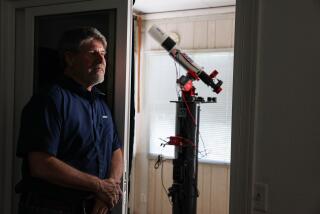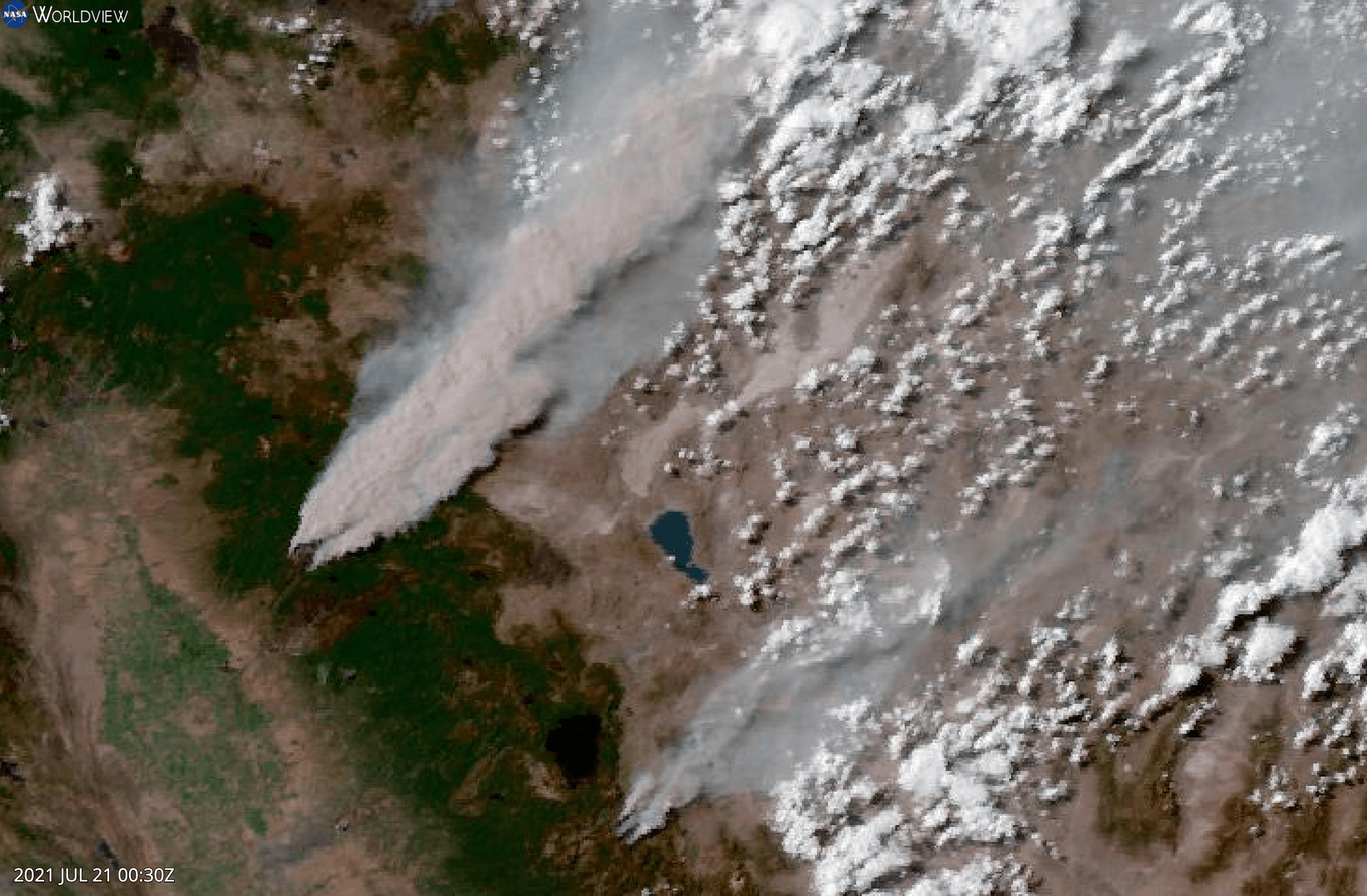A space telescope to thwart deadly asteroids: Donations needed
NASA has an eye on the sky for massive asteroids, the kind that could turn our planet to pulp. But âsmallâ asteroids -- the ones that could simply spur tsunamis, 100-megaton-type explosions and widespread death and destruction -- arenât a priority with NASA.
What the world needs is a privately funded telescope to keep an eye on the skies, says the B612 Foundation, spearheaded by a former NASA astronaut. The group, launched about 10 years ago, is now raising funds for just such a telescope -- called the Sentinel. (B612 is the name of the asteroid home of the Little Prince, from the best-selling childrenâs novella of 1943, âLe Petit Princeâ â the most famous work of Antoine de Saint-ExupĂŠry.)
The space agency is âextremely budget-constrained,â noted Scott Hubbard, a Stanford University engineering professor and the program architect for the Sentinel telescope project. He spoke to the Los Angeles Times on Thursday morning about the new fund-raising effort for the telescope -- a project that, he says, has âplanetary protectionâ at its heart.
Thursdayâs fund-raising kickoff for the telescope coincides with the 104th anniversary of the Tunguska explosion in Siberia. On June 30, 1908, Hubbard said, experts believe an asteroid about 150 feet across exploded over Siberia in midair, devastating a large area.
âIt didnât kill anything probably but reindeer and musk ox,â said Hubbard (no relation to this writer), âbut ... every tree was flattened for maybe a radius of 50 miles. This was a very, very powerful event ... a 100-megaton event.â
The impact that created Meteor Crater in Arizona -- 700 feet deep and 4,000 feet wide -- was likely similar to a 20- or 30-megaton explosion, he said.
âEven small asteroids can be extremely destructive and quite powerfully impact where they hit. Or if they explode in the air, itâs like an air-burst bomb.â
So the team behind the Sentinel aims to launch a spacecraft carrying the telescope in 2017 or 2018. With an orbit around the sun roughly similar to that of Venus, Hubbard said, the craft would survey and map the inner solar system for 5 1/2 years, looking for objects as small as 120 feet across. The team hopes to give those on Earth warnings of catastrophic impacts years in advance.
According to the Sentinel team, only about 10,000 of the more than half-million asteroids whose orbits cross Earthâs -- space rocks of the size in the Tunguska event -- have been discovered and tracked.
Still, even Tunguska-type events are not common occurrences -- Hubbard said model-based statistics put those at about once every 300 years, with the extinction-type events at every 60 million to 70 million years.
And, as noted in the Washington Post, thereâs some doubt as to whether Sentinel could see all possible threats floating around in space. Tim Spahr of the Minor Planet Center in Cambridge, Mass., told the news outlet that that was a âspectacularâ challenge.
Still, itâs an effort that the B612 Foundation believes is worthwhile. The foundation was begun about 10 years ago by former astronaut Russell L. Schweickart. Another former NASA astronaut, Ed Lu, is the current chairman of the foundation, and Hubbard is former director of NASAâs Ames Research Center in Californiaâs Silicon Valley.
The foundation has designed the telescope, and Ball Aerospace of Colorado has signed on to build it. NASA has agreed to allow use of its radio dishes for communcation, Hubbard said, and also is supplying some technical experts and a science team that will help gather and interpret data.
Now itâs fund-raising time. But the amount of funds that B612 is hoping to raise is fuzzy. The organization likens this project to âphilanthropic projects such as museums, performing arts centers and academic buildings.â
For the spacecraft alone, however, the group is estimating that it will need hundreds of millions of dollars. B612 has among its goals this lofty one: demonstrating âthe power of private organizations ... to carry out awe-inspiring projects for global good.â
Perhaps the foundation could consider a corporate sponsor. Would the foundation be willing to sell naming rights for the telescope?
Or would the foundation consider the reality-show route, which the team behind Mars One has taken? That project aims to fund an effort to have a human colony on Mars by 2023 with a âmedia spectacle.â
âWeâre not in the reality show business,â Hubbard said. âMost of the people involved in this have a very deep and serious space science background.â
Itâs a philanthropic effort, he says: âWeâre not intending to sell data. Data will be passed on to NASA and then to the whole world.â
But, he said, the foundation welcomes âany philanthropic contribution.â And if the contributor is of high net worth? The foundation is willing to talk.
ALSO:
Alien invasion? Thatâs OK with most Americans
Gay activists take swing at Chuck Norris for his Boy Scout diatribe
Waldo Canyon is the latest super fire -- get used to them, expert says
Join Amy on Google+. Email: [email protected]
More to Read
Sign up for Essential California
The most important California stories and recommendations in your inbox every morning.
You may occasionally receive promotional content from the Los Angeles Times.











